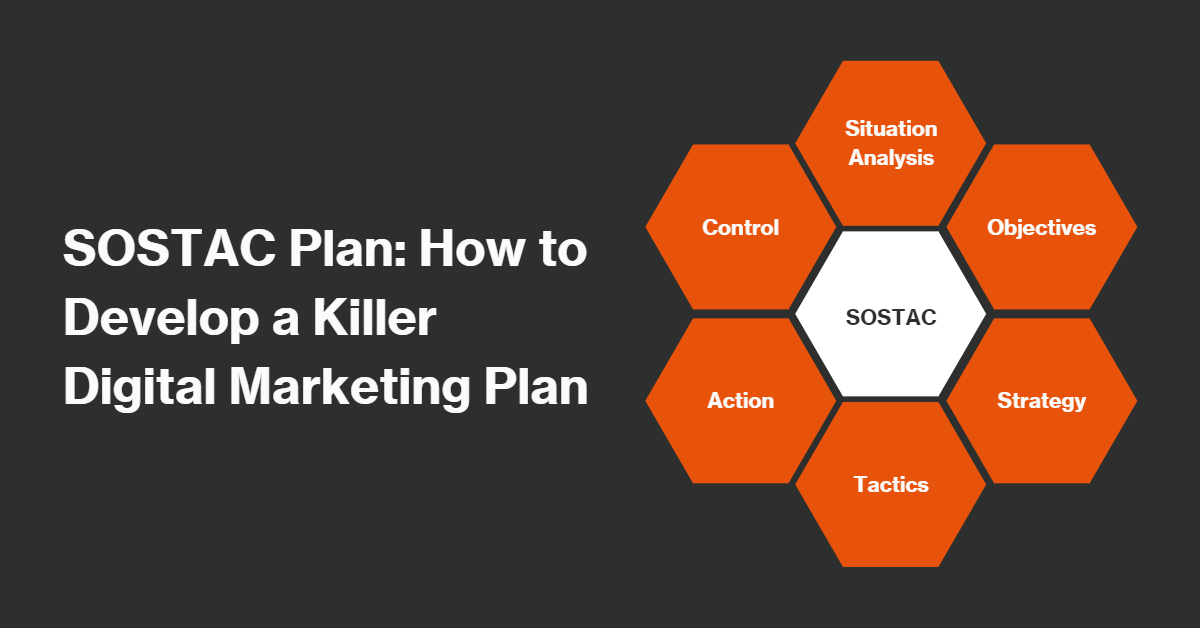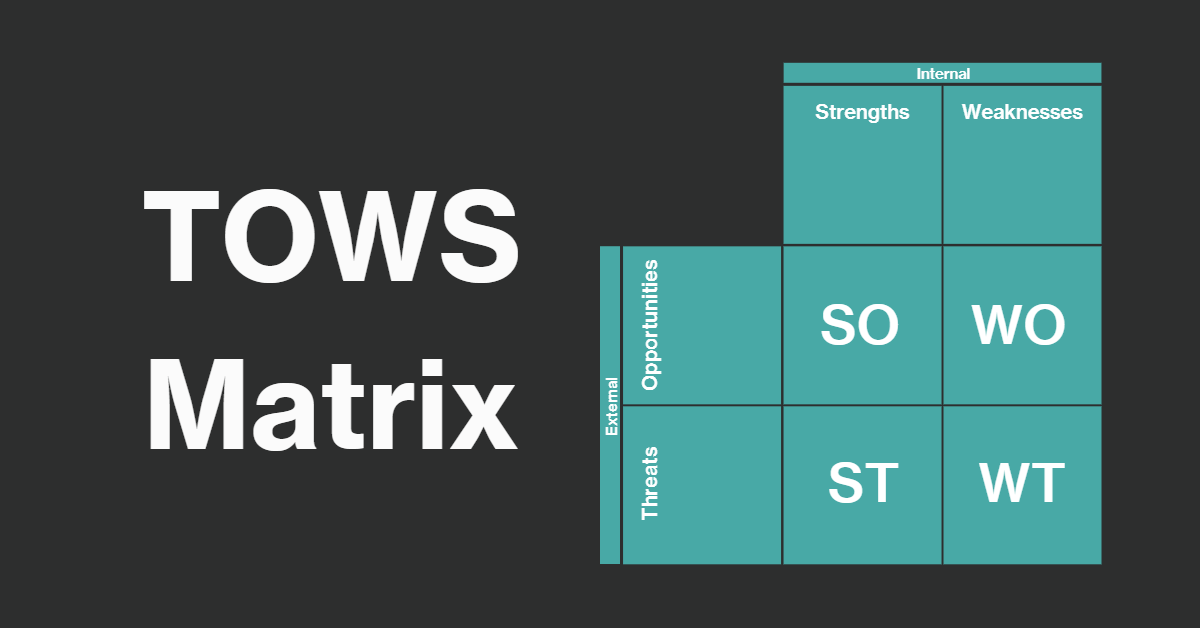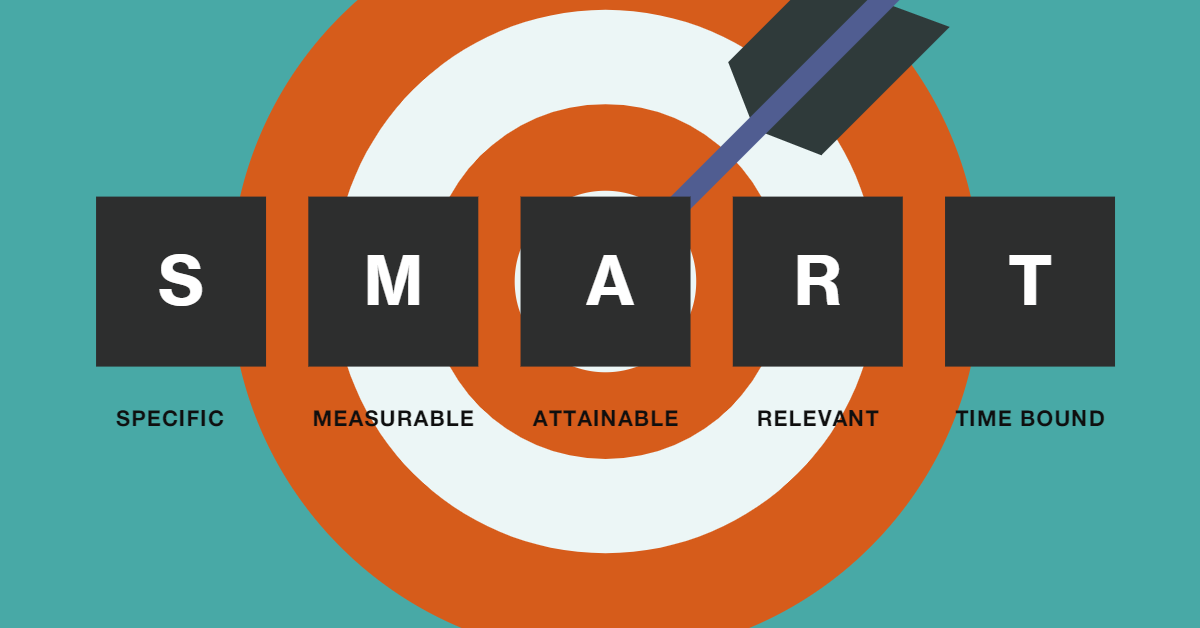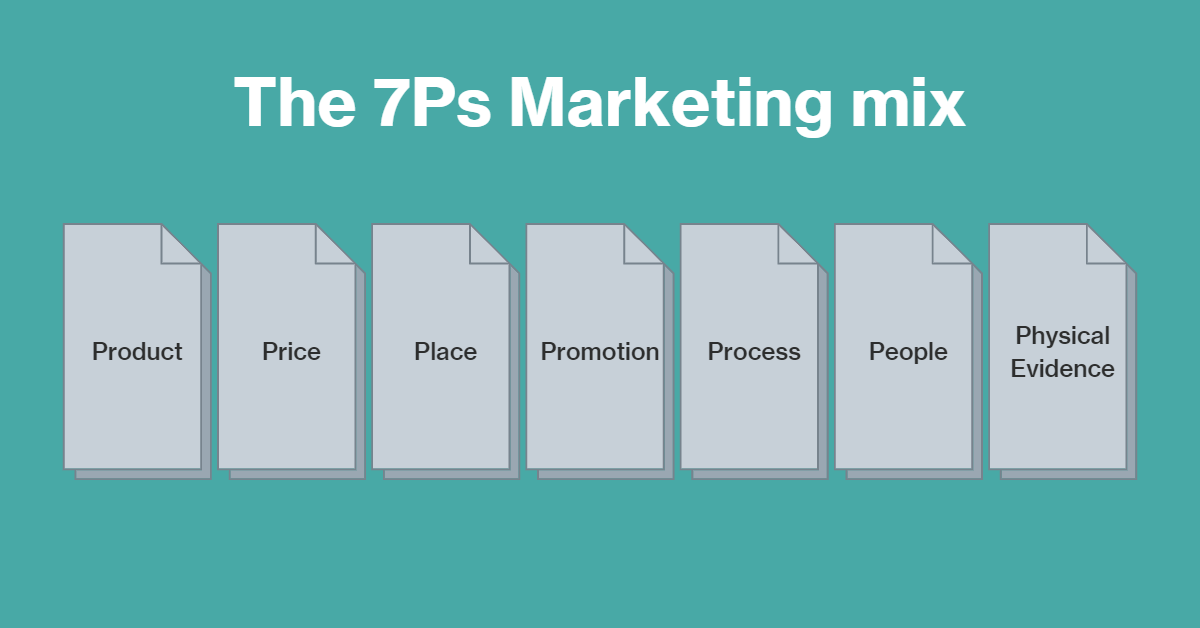Are you looking to create a killer digital marketing plan?
Look no further than the SOSTAC® marketing planning framework. This guide will teach you everything you need to know about this simple yet effective approach

What is the SOSTAC® marketing planning framework?
The SOSTAC® marketing planning framework is a popular digital marketing planning tool that helps businesses create effective marketing plans. The framework consists of six key stages: situation analysis, objectives, strategy, tactics, actions, and control.
PR Smith developed SOSTAC®, and it was named one of the top business planning frameworks by the Chartered Institute of Marketing. KPMG, RBS, and LinkedIn are just a few businesses that use it in their planning.
Creating the perfect digital marketing plan with SOSTAC®
SOSTAC® is a great way to create a digital marketing plan that is effective and efficient. By using this planning tool, you will be able to set your priorities and organise all of your digital marketing activities to create the perfect plan
Situation analysis informs your marketing plan
Situation analysis is a critical component of any marketing plan. By understanding the current environment, you can better assess your strengths and weaknesses and identify potential opportunities and threats. Situation analysis underpins your SOSTAC® plan and will make up a significant amount of the work that goes into producing your plan.
The typical components of a situation analysis include competitor analysis, internal capabilities analysis, PESTLE analysis, customer analysis, results analysis, and a partner/intermediaries analysis. Using a SOSTAC® situation analysis template can be a convenient way to manage your research.
SWOT Analysis

Having conducted various analyses, you can create a comprehensive SWOT analysis. SWOT stands for strengths, weaknesses, opportunities, and threats. This framework, also known as a "scenario planning" approach, helps you consider all possible scenarios and prepare for them.
Strengths and weaknesses relate to internal factors in your organisation. Opportunities and threats are external.
Use the TOWS model with a SWOT analysis

The TOWS Analysis is a great way to examine further your Strengths, Weaknesses, Opportunities, and Threats. Using the TOWS matrix, you match your organisation’s strengths, weaknesses, opportunities and threats to develop strategies designed to capitalise on opportunities or minimise threats.
The four TOWS strategies are:
-
Strength/Opportunity (SO)
-
Weakness/Opportunity (WO)
-
Strength/Threat (ST)
-
Weakness/Threat (WT)
Setting objectives in SOSTAC®
Setting objectives in SOSTAC® is a vital part of the digital marketing process. By setting clear objectives, you can ensure that your campaigns are effective and achieve your desired results. To set objectives, you first need to identify your business goals and break these down into the steps required to achieve them, which will provide you with marketing goals.
Align marketing objectives with the primary business goals
By starting with your primary business goals and cascading these down into your marketing objectives, you will ensure that your marketing plan perfectly aligns with your organisation's priorities. If the business's strategic goals are not guiding the marketing objectives, you are unlikely to create a successful marketing plan.
What are marketing objectives?
A business objective is a company's goal, such as increasing profits or market share. When creating objectives, it is important to distinguish between the following:
Strategic business goals: These are overarching company goals such as increasing profits, brand awareness, improving customer service, etc.
Marketing goals: These are specific, quantifiable goals that pertain to the marketing department and how it will achieve its objectives.
Frameworks for setting marketing objectives
Frameworks for setting marketing objectives can help you clarify your thinking and structure your objectives so that they are more useful for your team.
SMART objectives
A SMART objective is specific, measurable, achievable, relevant, and time-bound. In layman's terms, this means that a SMART objective is clear in that it sets out exactly what is wanted.

If the business needs to grow sales via online channels, a marketing objective could be to increase web traffic by 20% in the next six months. This would be a SMART objective. It is specific (increase website traffic), measurable (via Google Analytics), achievable (not unrealistic), relevant (more website traffic is likely to result in more online sales) and time-bound (six months).
PR Smith's 5S Objectives
PR Smith's 5S Objective Setting Framework is used to create digital strategies. The 5S objective framework comprises five different types of objectives: Sell Goals, Serve Goals, Speak Goals, Sizzle Goals, and Save Goals.
The Sell Goals objective is to increase sales and profits. The Serve Goals objective is to improve customer service. The Speak Goals objective is to improve communication. The Sizzle Goals objective is to create excitement or extend the brand. And Save Goals are about reducing costs using digital marketing
RACE Planning Framework
The RACE planning framework is a tool that can help businesses reach new customers and convert them into engaged customers. The framework consists of four steps: reach, act, convert and engage. The first step, reach, is all about getting your message in front of as many people as possible. The second step, act, is about getting those people to take action. The third step is about converting to sales, and the fourth step relates to creating brand advocates and repeat customers.
While it isn't strictly an objective setting framework, it can be beneficial to align your objectives with the different stages of the RACE planning framework to give your marketing objectives a structure that aligns with the other goals your organisation may have.
Your marketing strategy
Your strategy is the plan of action that outlines how a company will achieve its marketing goals. Once you have your SMART objectives defined, you can turn to your SWOT and TOWS analysis to inform the strategy to get you to your goals.
What does strategy mean in the context of SOSTAC® planning?
The strategy stage of your SOSTAC® marketing plan is the broad strokes summary of how you will achieve your objectives. It outlines the steps necessary to achieve those goals, including how the company will reach its target market, differentiate its products or services from its competitors, and generate demand for its products or services.
Basics of marketing strategy development
You can keep your strategy quite simple, but you must include three elements: segmentation, targeting and positions (STP).
Segmentation is defining your target market. This could be by geography, demographic, sector, or any number of other criteria.
Targeting is how you plan to reach your defined target market (e.g. online adverting, channel partners, affiliates, etc.)
Positioning is where you say that the product or service you offer will meet a customer need or want. It would help if you had a clear value proposition.
Create a complete SOSTAC® marketing strategy
PR Smith created a strategy template for SOSTAC® marketing plans that use TOPPP SEED to guide what you need to include in a complete strategy document.
TOPPP SEED stands for:
-
Target markets
-
Objectives
-
Partnerships
-
Processes
-
Sequences/Stages
-
Engagement
-
Experience/CX
-
Data
A complete marketing strategy will address each of the points of TOPPP SEED, providing everyone who reads the document with a complete understanding of what the organisation is aiming to achieve and how it plans to do so.
Tactics in your marketing plan
Tactics are an essential part of any marketing plan. They can help you reach your target audience and achieve your marketing goals. However, it is vital to choose the right tactics for your business and your target market.
Establishing the right marketing mix
A company's marketing mix combines marketing tools that it uses to achieve its desired results. A clear positioning statement makes it easier to determine which marketing channels and tools are most appropriate.
Use the 7Ps model to articulate your marketing mix completely.

7Ps of the marketing mix
The 7Ps of the marketing mix are product, price, place, promotion, process, people, and physical evidence.
-
The product is what the company offers for sale.
-
The price is how much the customer pays.
-
The place is where the customer can buy the product.
-
The promotion is how the company tells the customer about the product.
-
The process is how the company makes the product.
-
The people are the people who work for the company.
-
The physical evidence is the products, materials, and information that support the company's marketing.
Create a great plan with strategic marketing communication
Successful strategic marketing communication planning is all about creating a great plan that uses the proper channels and tools to get your key messages across to your target audience. The key is to establish a solid plan with several channels to get your message out and then stick to that plan.
Actions and project management
Creating an action plan for marketing is a critical step in successfully executing your SOSTAC® plan. Determining who does what and when is essential to ensuring that the project is completed on time and within budget.
Marketing plan: who does what and when
The marketing action plan should identify who will do what and when tasks must be completed. For example, the person managing all paid advertising may be responsible for reviewing each created ad. They also need to make sure that each ad is scheduled appropriately and stays on top of their list of planned campaigns.
Gantt charts and project management

One way to stay on top of your action plan is to create a Gantt chart. Gantt charts can be a valuable tool for project management. They help allocate tasks and resources and track the progress of a project.
A marketing team can use a Gantt chart to plan and track the progress of a marketing campaign. The chart would show the campaign's start and end dates, the tasks that need to be completed, and the corresponding deadlines.
Resourcing your marketing plan
When resourcing your marketing plan, you need to consider your marketing budgets, software and tools, skills, and whether you use an external agency. It is crucial to have a realistic understanding of what resources are available to you and what is needed to achieve your marketing goals.
Your SWOT analysis will help to inform your resourcing requirements. Through your SWOT analysis, you should be able to identify your internal strengths and weaknesses, which will inform whether you need to outsource work, upskill your internal team, and what your marketing budget allows you do to (e.g. small budgets require more creative thinking or deliberate spending.)
How to control your SOSTAC® plan
The control stage of your plan defines your performance management processes. Your performance management process will determine whether your marketing plan is working to achieve your strategic and tactical objectives and help identify ways to improve results even further.
Use key performance indicators (KPIs)
A KPI is a measurable value that demonstrates how effectively a company achieves key business objectives. Marketing KPIs can include website visits, social media followers, email opens and click-through rates, and leads generated.
The frequency with which you choose to report on your KPIs will vary according to each KPI. Some KPIs will be measured and monitored daily, whereas others will be reported monthly or quarterly.
KPIs should be a leading indicator of your marketing strategy's success. They give you an indication of how your content and campaigns are performing.
For example, KPIs like the number of website visits can determine whether the type of content is attracting the right audience.
Here are some examples of digital marketing KPIs
-
Unique website visitors
-
Customer acquisition cost
-
Number of leads generated
-
Click-through rate
-
Churn rate
-
Email delivery rate
-
Social media impressions
Creating a perfect plan for performance management
Part of your marketing performance management plan should include specific details about who is gathering performance data, the frequency with which they are reporting, and how the data is presented. You'll also need to be clear about who is analysing the data and actioning the conclusions if that is different from the person/team responsible for gathering the data.
One easy way to measure and monitor your marketing KPIs is to set up dashboards that automatically update. Tools like Oviond allow you to integrate many data sources, such as Google Analytics and Facebook Advertising, to track performance in near real-time.
PR Smith's SOSTAC® Guide to Your Perfect Digital Marketing Plan 2022 is regularly updated and available online. To learn more, visit www.SOSTAC.com

Comments